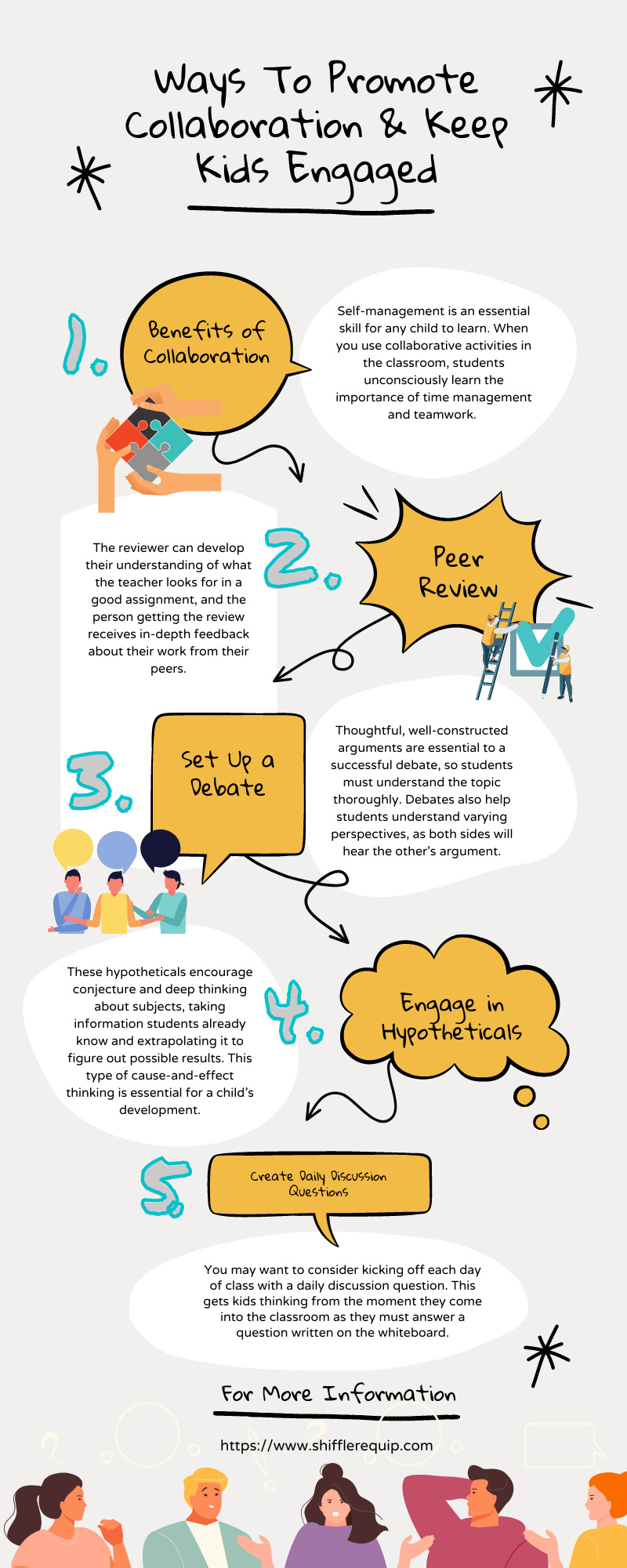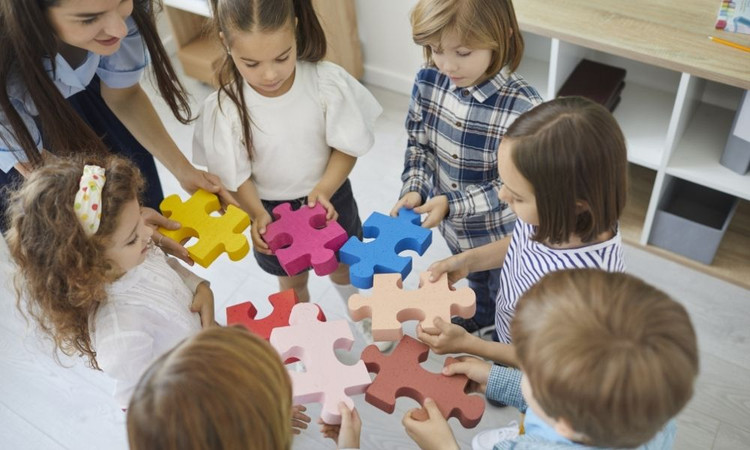7 Ways To Promote Collaboration & Keep Kids Engaged...
While most teachers believe that collaboration holds an incredible power to bring kids closer together while helping them academically, your students may not share the same view. How often have you seen one student take charge while others sit back? Or noticed one student feeling too nervous about bringing their ideas to the group? Here are seven ways to promote collaboration and keep kids engaged.
Benefits of Collaboration
It’s no secret that teachers love to employ collaborative learning with their students, but what are the actual benefits of collaboration? Social, educational experiences are vital in encouraging kids to develop higher-level thinking. Collaboration also helps young children become more comfortable communicating, especially among their peers.
Self-management is an essential skill for any child to learn. When you use collaborative activities in the classroom, students unconsciously learn the importance of time management and teamwork. On top of that, collaborative learning leads to higher retention of the material, as students who could daydream during a lecture are instead directly engaged with the discussion topic.
Finally, collaboration encourages children to understand diverse perspectives from a young age. As groups can contain any combination of races, genders, and experiences, students see to viewpoints they may otherwise lack.
Prepare Kids for Collaboration
The first step toward successful collaboration is in preparing your students for the activity. Consider developing collaborative groups at the start of the school year and sticking with these for the entire year. This will encourage even the shy students to come out of their shells in time, as they’ll soon become comfortable around the same group.
Kids are cleverer than many adults give them credit for, so explain the benefits of successful collaboration and help your students understand what collaboration might look like. This gives them a framework to refer back to when divided into their smaller groups. One essential skill to discuss is active listening. Tell your students about the importance of eye contact, follow-up questions, and a lack of interruptions.
Before assigning the first educational activity, give students time to work together to build some bonds. Create team-building opportunities that allow for decision-making, group discussions, and conflict-management skills.
Build Complex Activities
Simple assignments are not conducive to successful collaboration, as many students can complete the task independently. Instead, develop complex activities with open-ended questions and multiple stages.
These complex activities may span over days or weeks, so consider setting aside an hour a day for students to return to their groups to continue working on the task you’ve assigned.
Remove Leeching Opportunities
You’ve seen it before: a group of students hard at work with one child sitting out. Traditionally, this problem occurs when the entire group receives the same grade—the free-riding student gets a good grade without doing any work.
Therefore, a smart way to combat this behavior is to give grades based on the group’s work and an individual’s contribution. You can go about this by giving students an individual quiz at the end of the activity. Another method for avoiding these instances is to create smaller groups—with fewer participants; it’s tougher to hide a lack of work.
You can also create tasks with specific team roles ahead of time. That way, if one student slacks off and the others take charge, it’s easy to see which role is missing work.
Peer Review
Peer review is highly effective in both eliminating leeching and developing critical thinking. To implement a successful peer review system, make sure you give students the tools they need. That includes example assignments (good and bad), example reviews, assessment rubrics, and tips for giving constructive feedback.
Peer review is a fantastic tool for education because it helps both students. The reviewer can develop their understanding of what the teacher looks for in a good assignment, and the person getting the review receives in-depth feedback about their work from their peers.
Set Up a Debate
If critical thinking and a deeper understanding of topics are important to you, setting up a debate is a brilliant way to help your students. Thoughtful, well-constructed arguments are essential to a successful debate, so students must understand the topic thoroughly. Debates also help students understand varying perspectives, as both sides will hear the other’s argument.
You can boost engagement by assigning different roles, from debaters to moderators. Consider developing a few different debate questions so students can try their hands at multiple roles. You can also use this activity as an opportunity for learning outside the classroom by encouraging students to meet up after school to go over their stance.
Remember, deciding a “winner” isn’t the point of these debates. In fact, suggesting that a well-reasoned argument “lost” may discourage open collaboration in the future. Instead, use this as an opportunity to highlight the importance of discussion.
Engage in Hypotheticals
Everyone wants to know “what happens next,” so use that to your advantage. Pose interesting hypothetical questions to your students and watch as they engage deeply with material (sometimes without even realizing they’re learning). After teaching a particular topic, like insect biology, ask a question like, “What would happen if a butterfly’s chrysalis fell?”
These hypotheticals encourage conjecture and deep thinking about subjects, taking information students already know and extrapolating it to figure out possible results. This type of cause-and-effect thinking is essential for a child’s development.
Create Daily Discussion Questions
You may want to consider kicking off each day of class with a daily discussion question. This gets kids thinking from the moment they come into the classroom as they must answer a question written on the whiteboard. You may even notice children discussing today’s question in their groups before you start class.
You can use these questions to spark conversations about yesterday’s science lesson or get students excited for today’s topic of discussion. Regardless, you’ll need to make sure there’s a whiteboard in the classroom! We have plenty of school whiteboards for sale, and we’re happy to help.
Now that you know these seven ways to promote collaboration and keep kids engaged, start employing these strategies and watch your students’ teamwork go through the roof!


